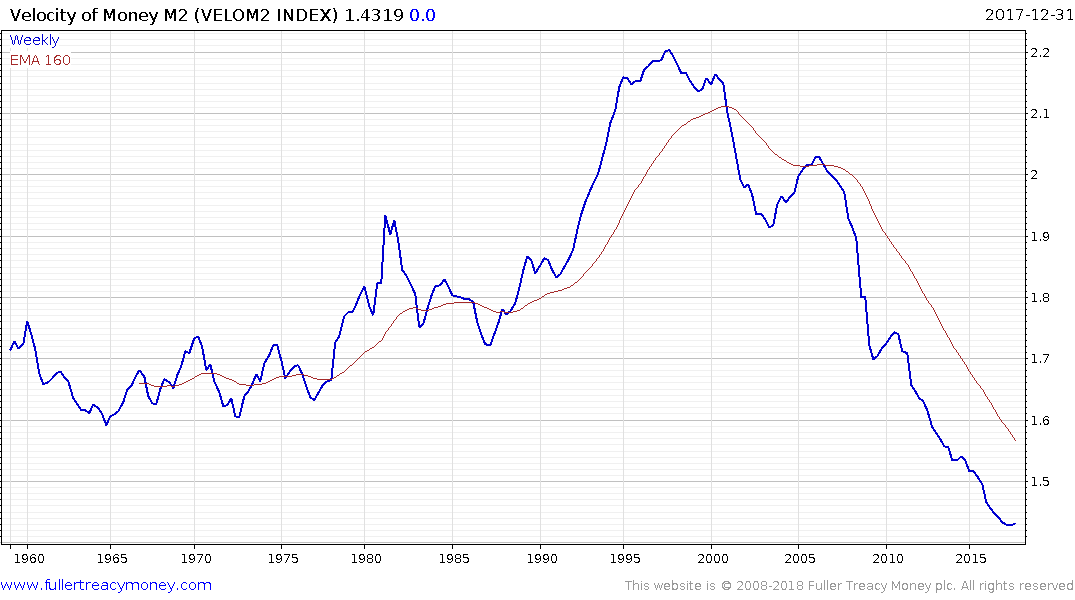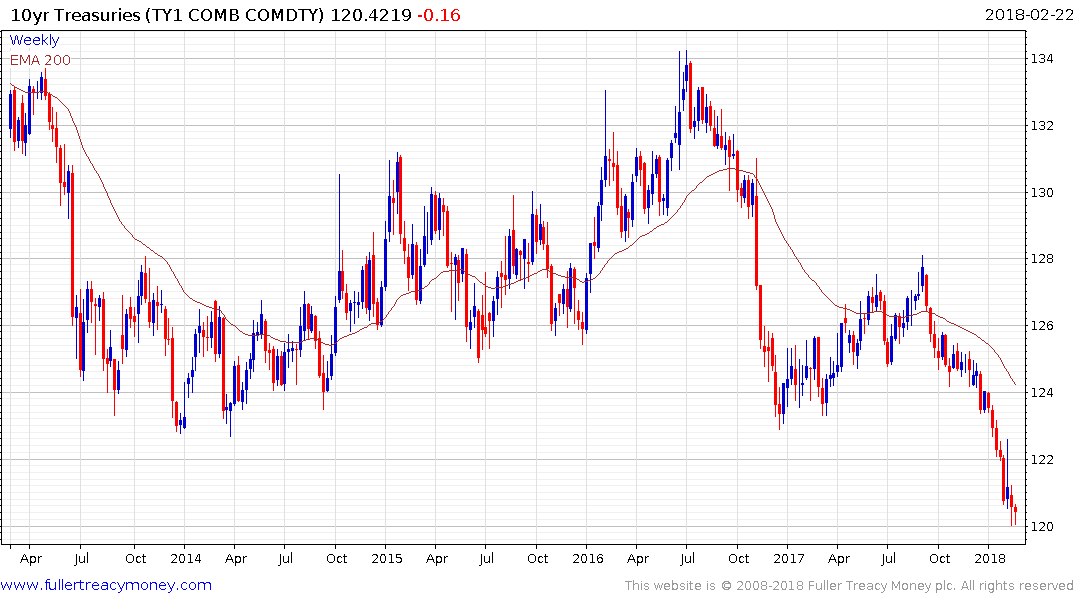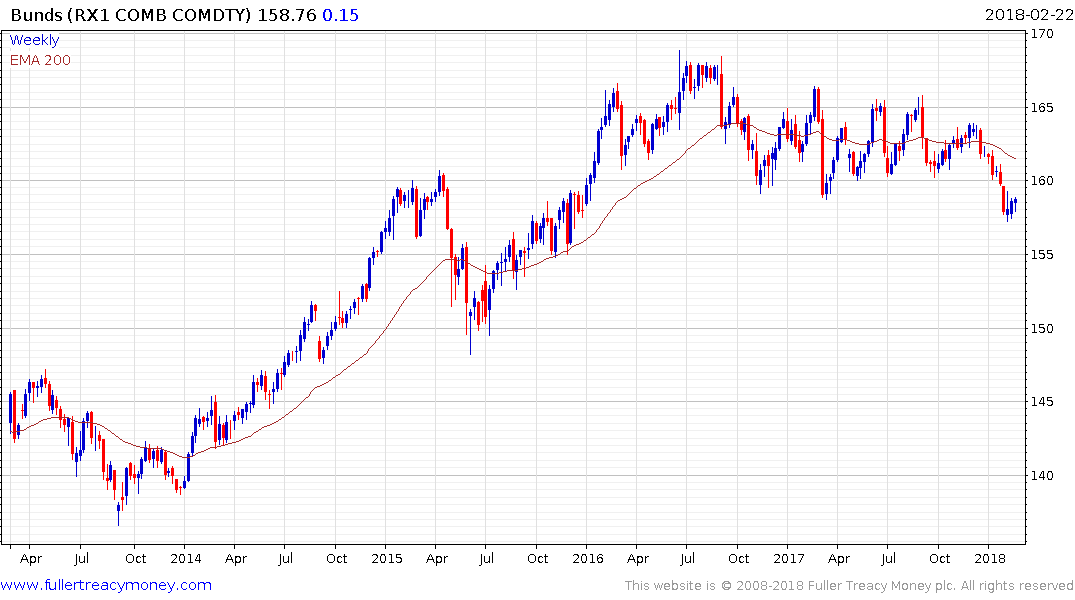Will Quantitative Tightening (QT), which is deflationary in theory, be inflationary in practice?
Thanks to a subscriber for this article by Viril's Sokolof for 13d.com which may be of interest. Here is a section:
It is equally noteworthy that most of the peaks in M2 velocity shown in the prior chart, with a couple of exceptions, occurred when the U.S. dollar was in protracted bear markets from 1972 to 1980, 1985 to 1995 and 2002 to 2008. Moreover, the first and third of those down-cycles was marked by generally-rising yields on 10-year U.S. Treasuries. In other words, one could argue that rising UST yields were a symptom of capital flowing out of the dollar, which contributed to a higher cost-of-money and higher inflation.
These relationships shed some insight into the idea that tighter monetary policy — reflected in the slowing growth rate of M2 and the onset of the Fed’s balance-sheet reduction — is likely to be inflationary in practice. When money supply growth slows and the demand for funds increases — such as with the $1 trillion-plus fiscal deficits we wrote about last week — the conditions are ripe for an inflationary surge and a falling dollar. One could also argue that this will be good for real assets (which were hurt by QE during 2010 to 2016) but bad for financial assets (which benefited from QE).
The Velocity of Money is reported quarter in arrears so it tends to be a lagging indicator but it did turn upwards at the last reading in December. It stands to reason that if the economy has less slack and the government is about to blow out its deficits then inflationary pressures rise.

It has been my belief for much of the last decade that inflation would not be a problem until the velocity of money starts to trend higher. The introduction of fiscally fueled boom has real potential to accelerate the circulation of money around the system. That will in turn necessitate that central banks remove money supply to avoid an inflationary spiral, but it also suggests that interest rates are heading higher.
I believe it is important to remember that these are medium-term considerations that will play out over the next year or more. In the meantime, I was long of US Treasury futures a month ago because I believed the risk of a reversionary rally was increasing. That was an ill-timed trade but right now, an even deeper oversold condition is evident, so there is still potentially room for a countertrend rally, not least because there is such a high conviction that that bond market is about to break down imminently, suggesting there are already a lot short positions open.


There is also some evidence of a short covering rally getting underway in German Bunds which may unwind the short-term oversold condition relative to the trend mean.


